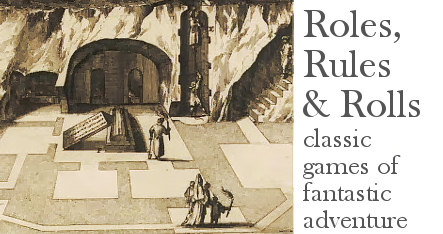FrDave on Blood of Prokopius had an idea a while back that perfectly fits my search for an alternate term for an adventuring "cleric" or "priest." He suggests that a campaign might include miracle-working "prophets" in the Biblical sense of the word. I think this is a great idea not just for a specific campaign, but a general set of rules.
I think my dissatisfaction with "cleric" and "priest" is a widely shared sentiment. "Cleric" is one of those journalistic synonyms that has picked up unwanted associations. Some of those are with accountancy and others are with the standard, mace-packing, D&D class that has taken on a strange life of its own on the basis of game rules and historical misperceptions. Along with "priest," "cleric" doesn't convey enough of a sense of the strange and wondrous and miraculous. It implies that every village vicar comes equipped with healing miracles, and conversely, it implies that your adventuring holy person is akin to one of those cozy old souls, beholden to the church hierarchy, relaxing in the study with some port, available to do weddings and bar mitzvahs.
But none of the alternatives really work. "Saint" implies a very restrictive code of behavior, and anyway, players shouldn't be walking around canonized already. "Holy man" also implies you're sanctified, needs to be gender-switched for women, and comes across as bland and generic, like "magic-user."
Prophets, though, are not saints in the colloquial sense of the word. They're capable of summoning bears to maul some bullies, or marrying a prostitute to name the children as part of an extended metaphor. They are wanderers; without honor in their home town. I think they make a great model for adventurers.
So for me the question is how this model fits into my One Page rules for priests. Well, apart from "prophet" being longer on the page than "priest" (causing some grumbling), they should really have some way to prophesy shouldn't they? In One Page rules, priests get one "miracle" per day, plus an extra one if they make a Mind save. These miracles tend to be of a healing bent, but I'm finding the Priest class really strong in play because of their miraculous ability to bring someone back from a 0 HP or less major wound (that is, real physical damage rather than just hit points, in my system). So I'm considering replacing the Priest's progression of
Level 1: Heal major wound to 1 HP
Level 2: Make a second save against poison
(and maybe those two should be flipped around anyway?)
with
Level 1: Get indirect answer to yes/no question
Level 2: Heal major wound to 1 HP
and possibly other abilities at higher levels, to match the wide variety of miracles attributed to prophets in many religions.
To the Moon, Like All Lost Things
26 minutes ago















